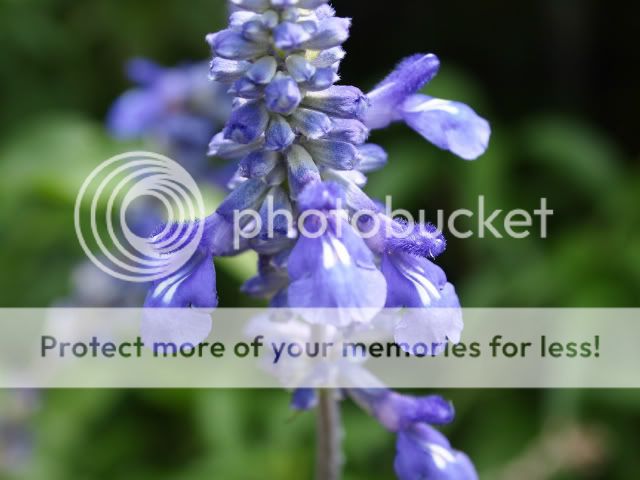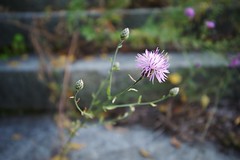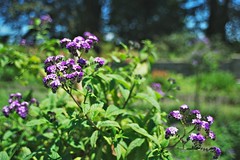Forums › Forums › Farktography General Chat › This week’s contest › 08-17-11 – Mmm Bokeh 2: Electric Bokehloo
- This topic has 127 replies, 22 voices, and was last updated 12 years, 8 months ago by
olavf.
-
AuthorPosts
-
July 28, 2011 at 1:31 am #1856
Elsinore
KeymasterBokeh refers to the blurry out of focus elements in an image.Show us images that use bokeh creatively.
July 30, 2011 at 6:51 pm #29255geom_00
ParticipantHi all, another question from the (relative) newbie 😛
I have heard about Bokeh, but have never really done anything with it.
The reason I am posting is two fold. First off, would this picture be allowed. I have an Olympus PEN E-PL1 and it has a macro function that the camera takes care of “in camera” so to speak. I used this to capture the picture.
So, would that be allowed?
Second, am I even on the right track with this picture? Looking at a wikipedia article I am…but I would rather have your opinion.
Thanks!!
 July 30, 2011 at 9:25 pm #29254
July 30, 2011 at 9:25 pm #29254nobigdeal
ParticipantYes that would be an acceptable example of bokeh.
July 30, 2011 at 9:31 pm #29253ennuipoet
Participantgeom: The truly picky would say that bokeh is the out of focus points of light in the photo, not just the soft background blur of shallow depth of field.
So this photo:http://www.flickr.com/photos/blmiers2/5066164844/ with it’s convenient note describing the bokeh is a good example of the purists definition.
This photo: http://www.flickr.com/photos/ennuipoet/5596139152/ has a nice soft background blur due to the shallow depth of field I used, but no strong distinct points of light. The purist would not use this to demonstrate bokeh.
This is, however, Farktography, not a Flickr forum 😀 I would think the pic you posted is fine for this contest. Anything with a strong in focus object and soft out of focus background should be fine for this contest.
Of course, I did not submit this one, so my word is not final.
July 30, 2011 at 9:38 pm #29252Elsinore
KeymasterActually, to be particularly picky, the Japanese word “bokeh” simply means blur and does not require the out of focus orbs. Using bokeh intentionally in a photograph where it isn’t blurred out to a uniform featureless background but rather has something that piques your interest is generally more of a demonstration of the usefulness of bokeh. For a contest like this, that’s more what it’s aimed for, and geom‘s photo would qualify just fine.
/admin several bokeh groups on Flickr
July 31, 2011 at 12:16 am #29251olavf
ParticipantMy dragonfly pic this week is bokeh to the extreme, but not something I would submit to this contest. As Elsinore basically said, it’s bokeh, but it doesn’t exemplify bokeh, or really obviously use it as an artistic part of the photograph.
The trick is to make the background part of the art, without it being an obvious part of the photograph, IMO. And, it’s tricky 😛
/but, yeah, geom it certainly fits the rules, and the bill.
July 31, 2011 at 1:05 am #29250Yugoboy
ParticipantSo… to clarify…
to actually be “bokeh” and not just shallow depth of field, the out of focus part needs to be somewhat identifiable as not just blurry shapes?
July 31, 2011 at 1:47 am #29249sleeping
ParticipantIMNSHO, people who argue that out of focus point light sources = Bokeh are mistaking the definition.
Bokeh is the way a lens renders out of focus elements in an image, and it’s primarily an attribute of a lens, not a photograph.
To be sure, the exact way a lens is behaving is definitely most easily seen/quantified when you have point light sources in the background, but that’s not at all the same thing as saying they are equal.
July 31, 2011 at 1:50 am #29248geom_00
ParticipantThanks for all the info!
July 31, 2011 at 4:11 am #29247Elsinore
KeymasterIMNSHO, people who argue that out of focus point light sources = Bokeh are mistaking the definition.
Bokeh is the way a lens renders out of focus elements in an image, and it’s primarily an attribute of a lens, not a photograph.
To be sure, the exact way a lens is behaving is definitely most easily seen/quantified when you have point light sources in the background, but that’s not at all the same thing as saying they are equal.
Yes, this ^^
So… to clarify…
to actually be “bokeh” and not just shallow depth of field, the out of focus part needs to be somewhat identifiable as not just blurry shapes?
sleeping hopefully clarified this for you, but ultimately, bokeh itself simply refers to the out of focus part(s) of an image and the quality of it as rendered by the lens. If you have shallow depth of field demonstrating blur/bokeh, your image should minimally qualify. However, the point of this theme is to use bokeh artistically. So an insect perched on a blade of grass where the background is a uniform green blur certainly shows bokeh, but it’s not necessarily using the bokeh as an artistic feature. Conversely a shot of a piano keyboard at large aperture with the keys progressively more blurry into the distance, or a Christmas scene with a close subject in focus and distant Christmas lights out of focus would both be more in line with the spirit of this theme.
Also geom_00: In-camera macro has always been allowed. I’ve never been clear on what a point and shoot camera does internally with its optics to changet to focusing at macro/close-up distances (sleeping would probably be able to speak to that), but it’s always been assumed to be fair game.
July 31, 2011 at 5:14 am #29246sleeping
ParticipantI’ve never been clear on what a point and shoot camera does internally with its optics to changet to focusing at macro/close-up distances
Depends on the camera. Some seem to be recombobulating their optics when you put them in macro mode (probably either moving the lens unit further from the sensor or shortening the focal length), but in a lot of cases it looks like it’s just removing a limit on the AF system (probably to allow faster focusing in normal mode).
July 31, 2011 at 5:36 am #29245sleeping
ParticipantGetting back to the Bokeh thing, here’s an example of how two different lenses at similar focal length, aperture, and distance can render the background very differently:
The background of the Sigma image is a lot smoother than the Nikon, which has quite a bit of texture/busy-ness to it.
If you look at the highlight circles in the Nikon image, you’ll see the edge of the circle is often brighter than the middle – that’s why the background isn’t as smooth. The ideal for a smooth background is an even circle or even to have the edges fade away from the middle.
July 31, 2011 at 6:19 am #29244ravnostic
ParticipantWhat about specialty filters and their effects? Of the last pictures I took with my original xTi, most were with the DP lens, using the cookie-press plates as faux waterhouse stops. I have a number of flower shots, with reeds/grassy things in the background, and taken at shallow DOFs for the effects–which give an almost impressionist-look (or some painting style, anyway) to the flowers themselves, and almost a canvas effect to the background reeds/grasses etc. I’m at work so I can’t post an example, but unless it’s WAY out of the ballpark for what bokeh is supposed to be, I’ll do so when I get home in the morning.
//edit: Good morning! Here’s one of the shots of which I wrote:
Your call, mods–I can always use them in another theme that calls for something more along these lines.

//not the shot I’d use, but a good demonstration of the effect. I do so love the DP lens–I’ve had some really neat photo experiences with it. 😀
July 31, 2011 at 12:45 pm #29243ennuipoet
ParticipantI just wanted to say that I am not the picky sort of person who quibbles over fine points of a definition. I based my reply on some particularly snarky Flickr comments sparking a bokeh debate. I didn’t follow them to the end to see the official call. I’d always more or less assumed that bokeh is, as sleeping said, a technical property of the lens not the photograph. I know my EFL 70-200mm has kick ass bokeh, which is enough for me.
That being said, for those who need such thing, long teles are a great way to achieve the rich, smooth background blur if you don’t have any primes. The long focal length gives you smooth back grounds at higher f-stops than the shorter lenses.
July 31, 2011 at 3:01 pm #29242sleeping
ParticipantWhat about specialty filters and their effects?
Using a shaped aperture should be OK, but a soft focus filter or something along those lines would’t really count.
-
AuthorPosts
- The topic ‘08-17-11 – Mmm Bokeh 2: Electric Bokehloo’ is closed to new replies.

